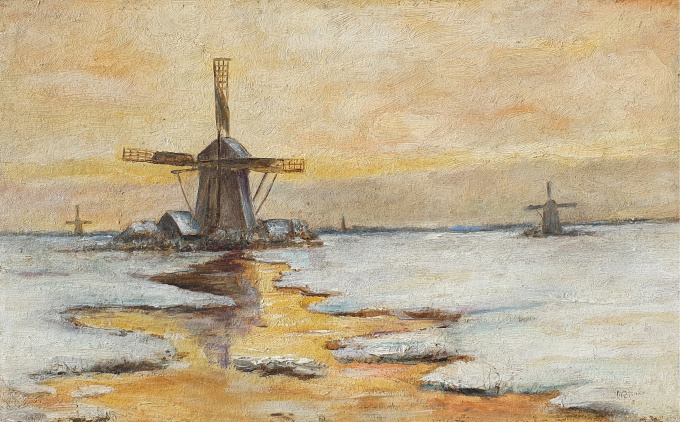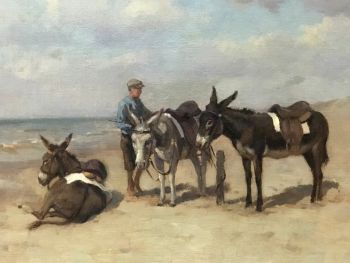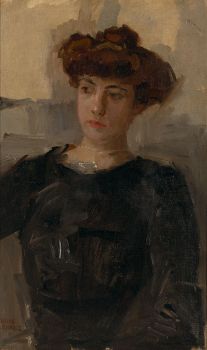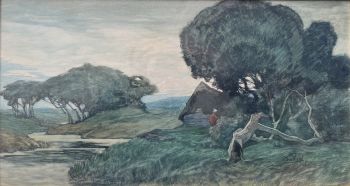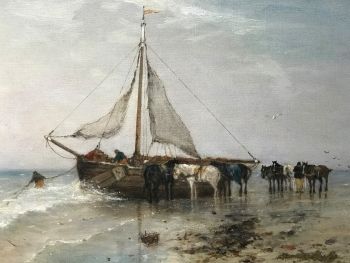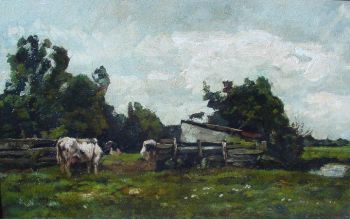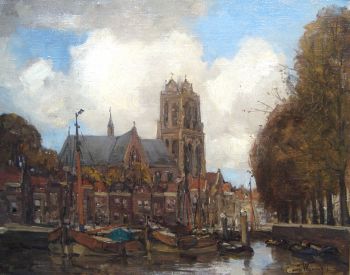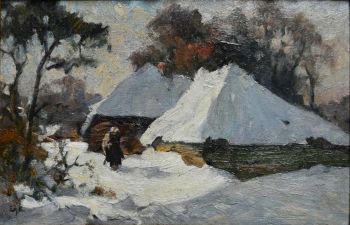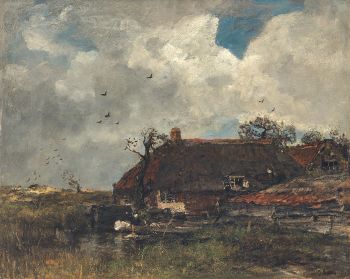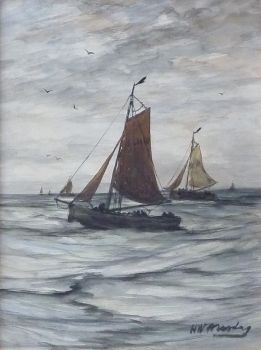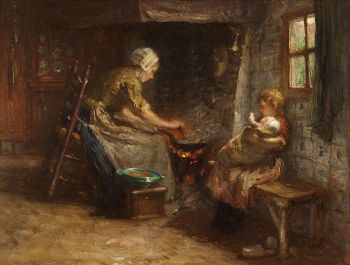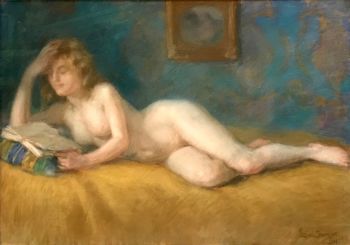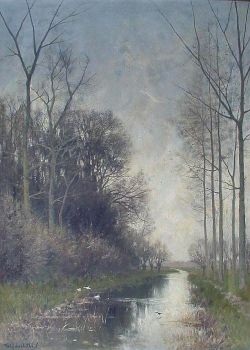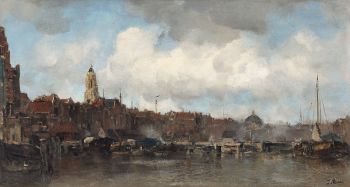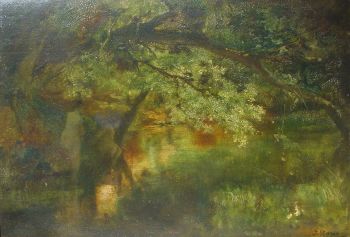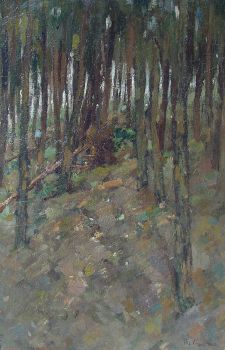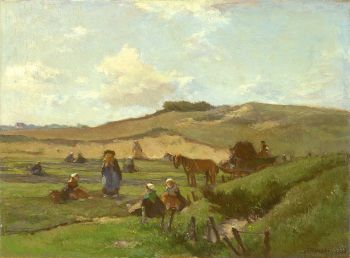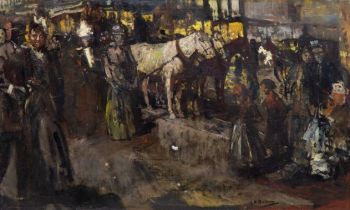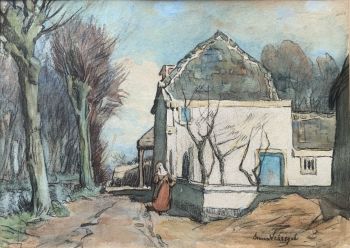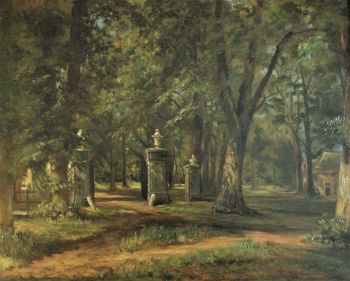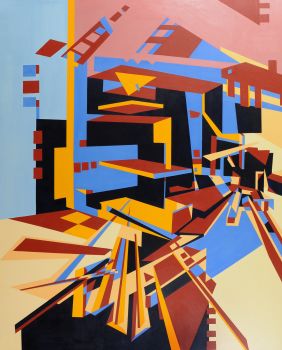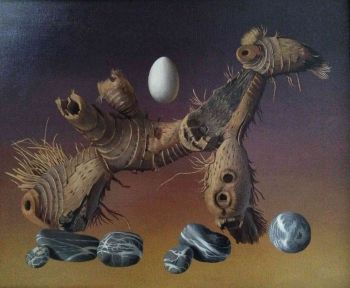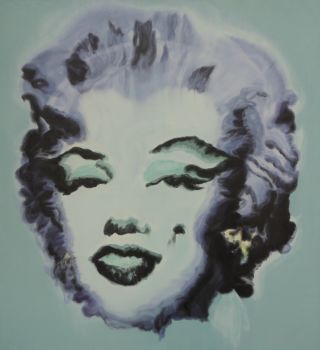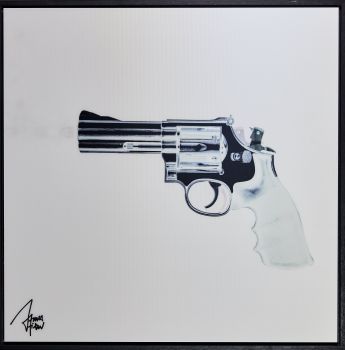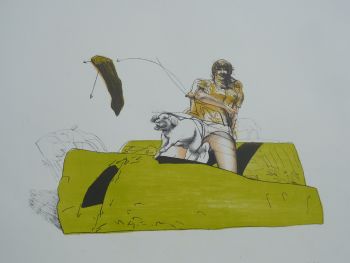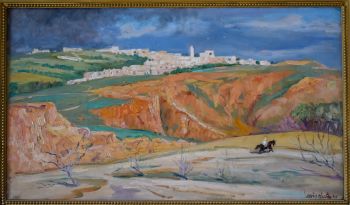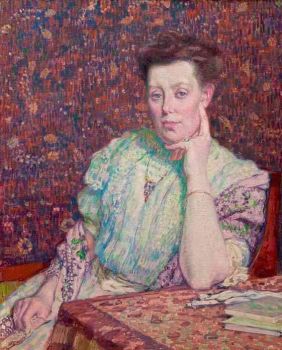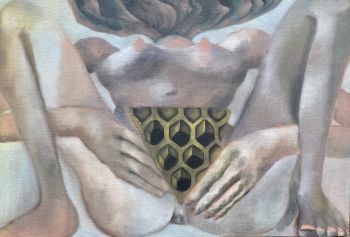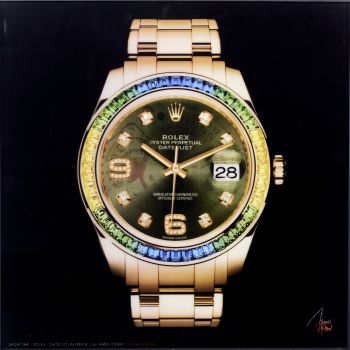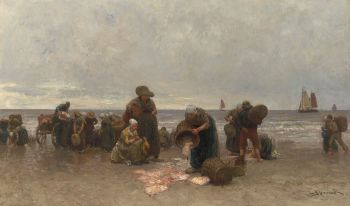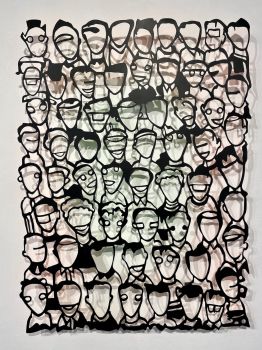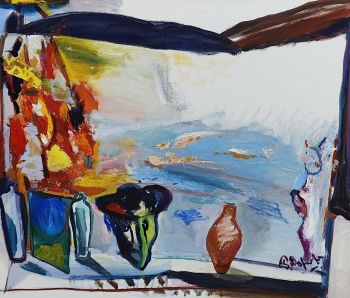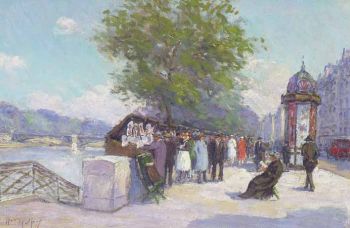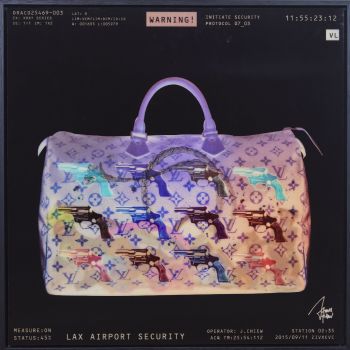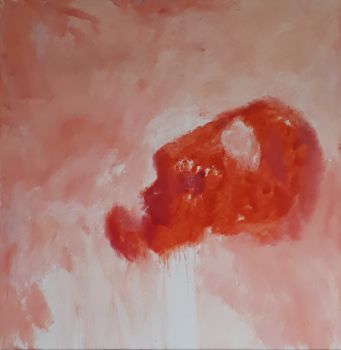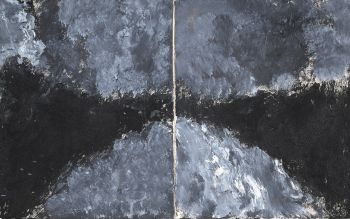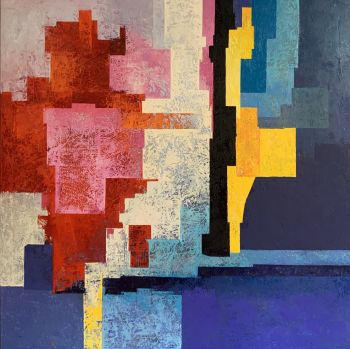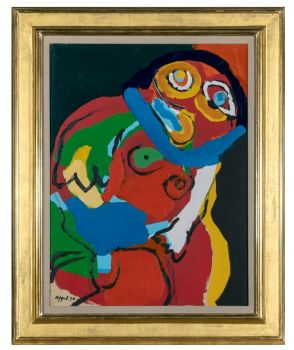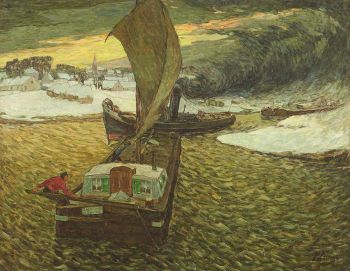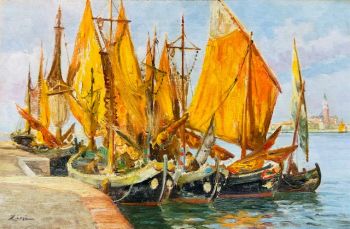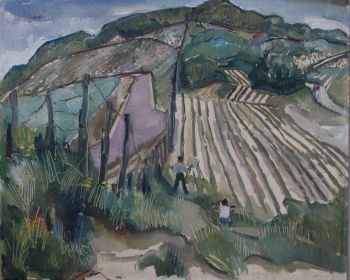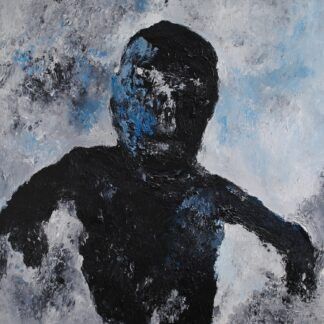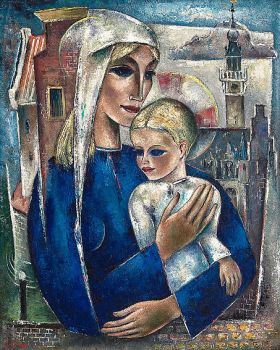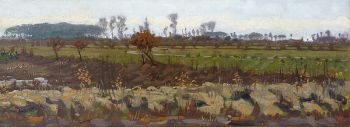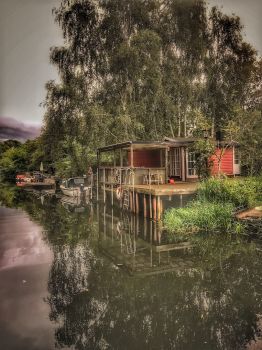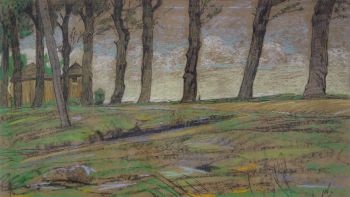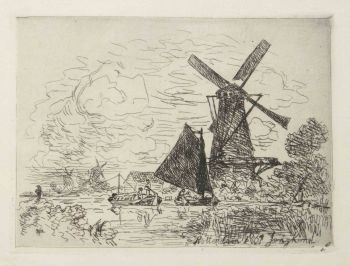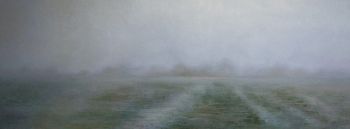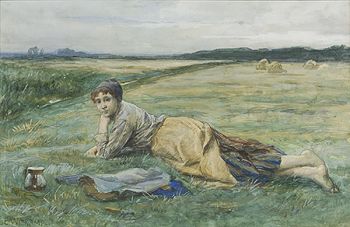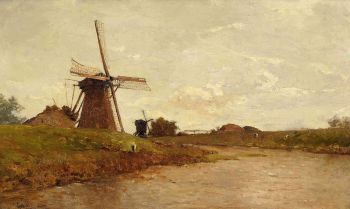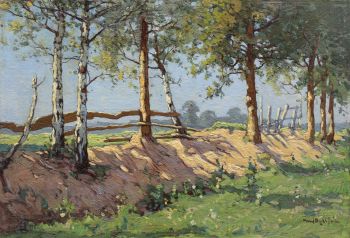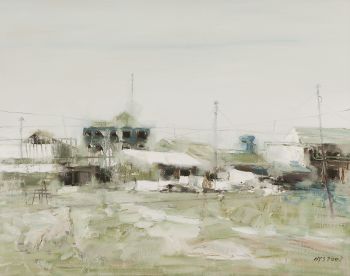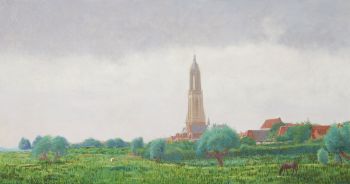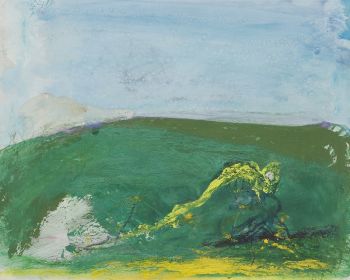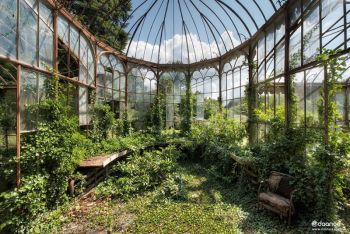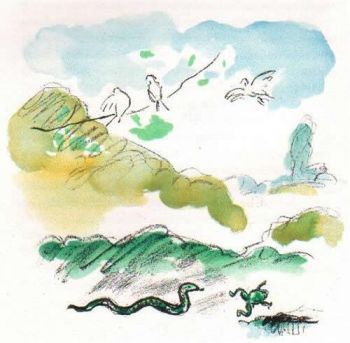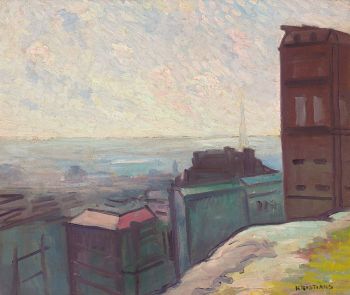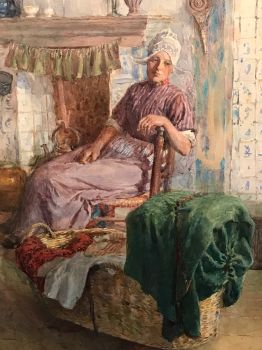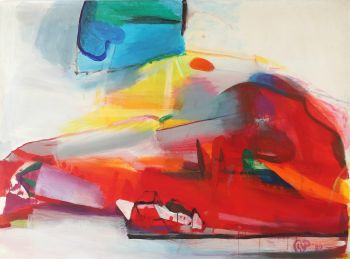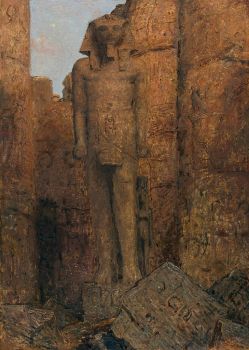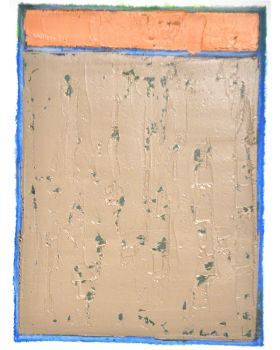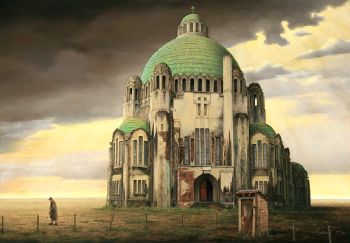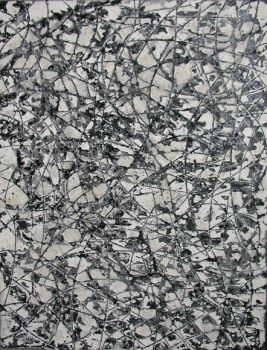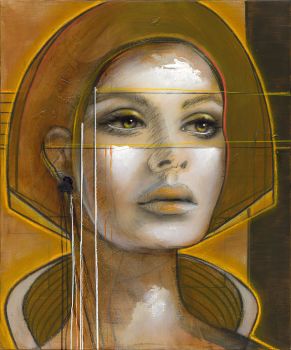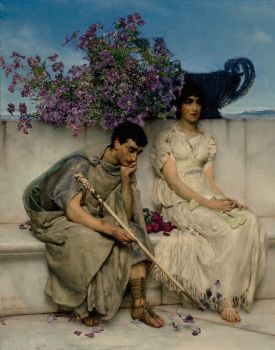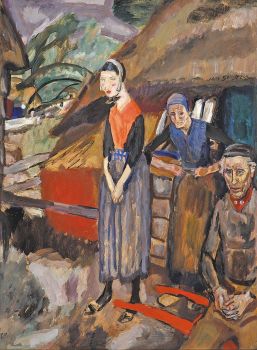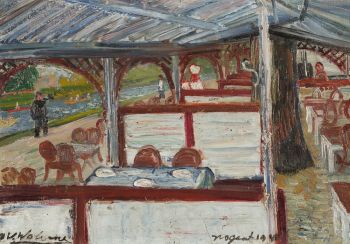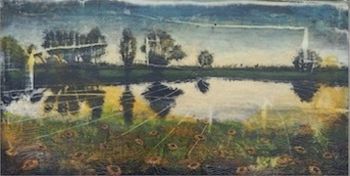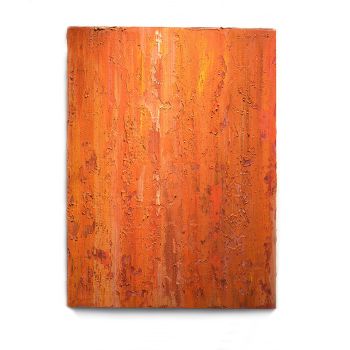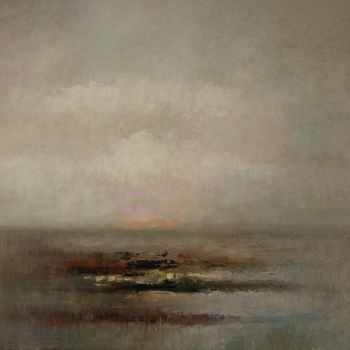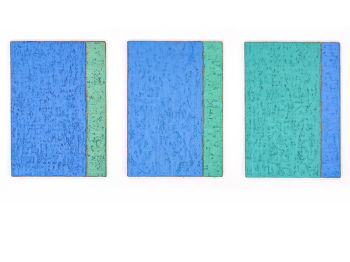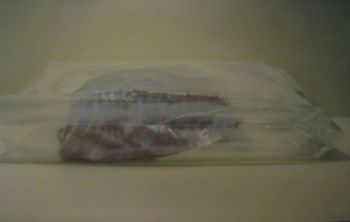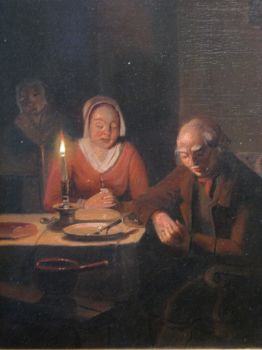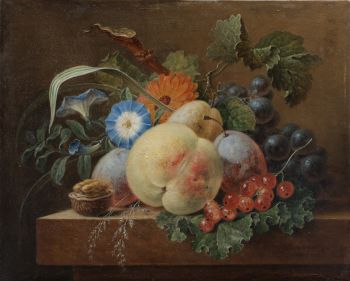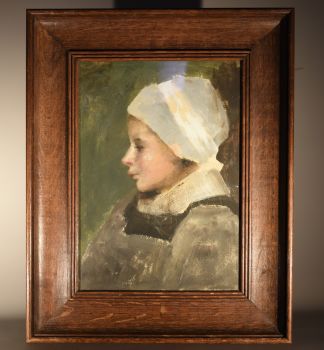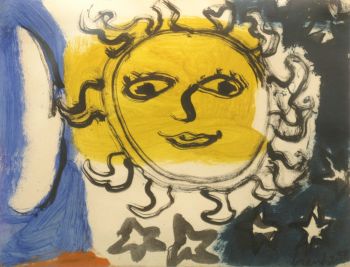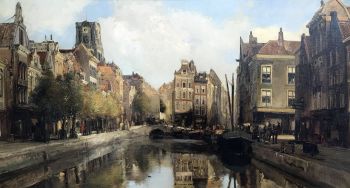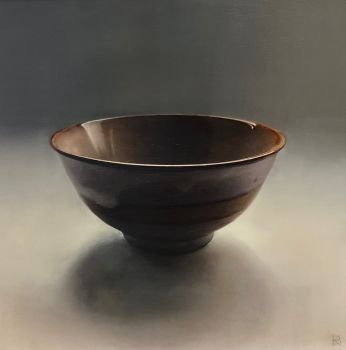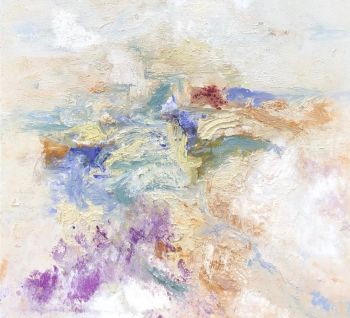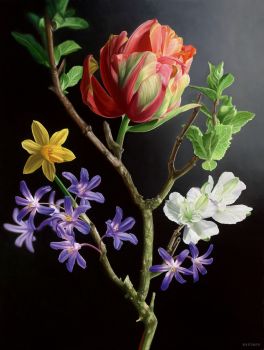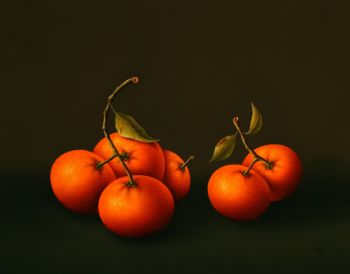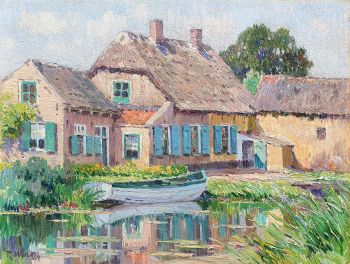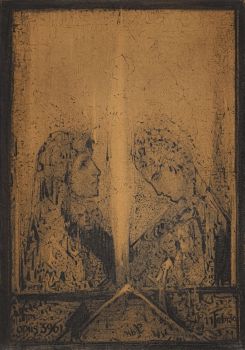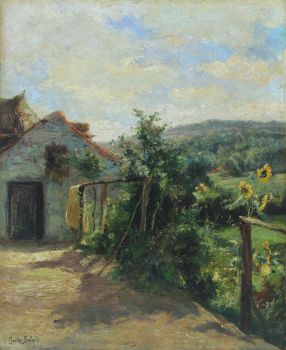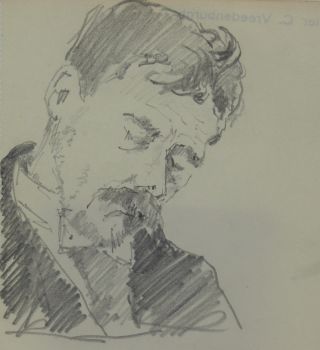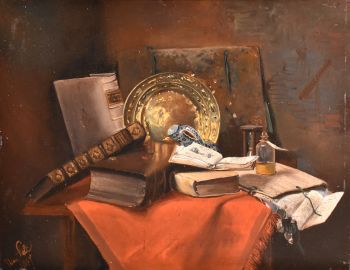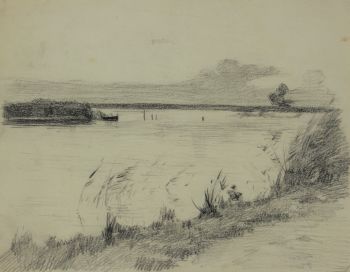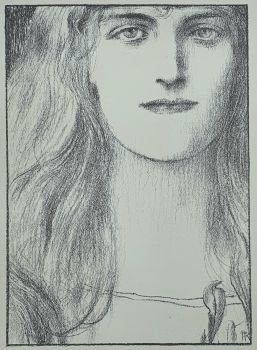Winter in Holland 1900 - 1910
Philippe Zilcken
BoisPlanchePeinture à l'huilePeindre
18.50 ⨯ 31 cm
ConditionExcellent
€ 2.750
Klooster Fine Art
- Sur l'oeuvre d'art[EN]
Philip Zilcken used an unusual palette to create the atmosphere for this winter view of the Dutch countryside. Winter in Holland may be the same painting that Zilcken showed in 1909 on the 79th international exhibition in the Museum of Modern Art in Rome, Italy. In the review of the exhibition in De Nieuwe Courant, on 10 April 1909, the reviewer remarked that out of all Dutch contributors, Zilcken was the only artist that proved of international cachet. The writer stated that ‘An old gate in Algiers’ and ‘Winter in Holland’ were painted in eccentric and atmospheric tones that draw much attention. By doing so, the reviewer wrote that Zilcken was the only Dutch artist standing out from the masses.
This landscape of the countryside show just those atmospheric tints the reviewer praised in Zilcken’s Winter in Holland. By having the warmly coloured sky reflected in the water stretching towards the closest windmill, Zilcken created a stark contrast with the snow on the fields. Two more windmills can be seen in the background. All three windmills have their sails in the short rest position. When millers weren’t expecting rain for a short while, the sails would be left in this position, resembling a big ‘+’ sign.
Especially in the sky, Zilcken used his typical, vivid brushstrokes, almost giving a sense of movement. This painting on board is signed ‘Ph Zilcken’ on the lower right.
[NL]
Philip Zilcken gebruikte voor dit Nederlands winterlandschap een ongebruikelijk palet om de juiste sfeer weer te geven. Mogelijk is Winter in Holland hetzelfde schilderij dat Zilcken toonde op de 70ste internationale tentoonstelling voor moderne kunst in Rome in 1909. In de tentoonstellingsrecensie in De Nieuwe Courant, op 10 april 1909, merkte de recensent op dat van alle Nederlandse inzendingen, Zilcken de enige met internationale allure was. De auteur stelde dat ‘Een oude poort in Algiers’ en ‘Winter in Holland’ in eccentrische en atmosferische tonen waren geschilderd, en zo veel aandacht trokken. Daardoor zou Zilcken als enige Nederlander zijn opgevallen in de massa.
Dit polderlandschap laat precies het soort atmosferische tonen zien die de recensent in Zilcken’s Winter in Holland prees. Door de warm gekleurde lucht in het water te laten reflecteren, legde Zilcken extra nadruk op het contrast met de sneeuw op de weilanden. Alle drie de windmolens hebben hun wieken in de korte ruststand staan. Wanneer molenaars een tijdje geen werk verwachtten, werden de wieken in deze stand gezet.
Met name in de lucht gebruikte Zilcken zijn kenmerkende, dynamische penseelstreken, die bijna beweging lijken te suggereren. Het schilderij werd op board gemaakt, en rechtsonder gesigneerd: ‘Ph Zilcken’. - Sur l'artisteCharles Louis Philippe Zilcken était un artiste et écrivain néerlandais. Il est né à La Haye en 1857, l'endroit où il s'est inscrit pour la première fois aux cours de dessin pendant ses études au Gymnasium Haganum. Il est entré dans l'histoire en raison de sa position de co-fondateur de la Dutch Etching Society et de rédacteur en chef du mensuel Illustrated Journal d'Elsevier, le prédécesseur du Elsevier Journal, de 1896 à 1905. En 1928, il a personnellement écrit ses mémoires sous le titre traduit par «Souvenirs d'un peintre hollandais du dix-neuvième siècle»; principalement un souvenir de ses voyages et de son intérêt pour les pays d'Afrique du Nord tels que l'Égypte. Son accent sur l'Oriental peut être retracé dans ses peintures à l'huile, pastels et gravures lors de l'examen de son utilisation de la conception architecturale et l'individu n'est connu que pour jouer un rôle de type subordonné. Un grand nombre d'œuvres dessinées sur place et imprimées à l'encre rouge-brun ont survécu à l'épreuve du temps; ceux-ci sont souvent caractérisés par une conception sommaire. Zilcken est décédé en 1930. De nos jours, son travail peut être admiré dans des musées tels que le Rijksmuseum d'Amsterdam.
Êtes-vous intéressé par l'achat de cette oeuvre?
Artwork details
Related artworks
Isaac Israels
"Een essayeuse bij het modehuis Hirsch"1865 - 1934
Prix sur demandeStudio 2000 Art Gallery
 Sélectionné par
Sélectionné parDanny Bree
Aris Knikker
Riverview with a village (Kortenhoef, Netherlands)1887 - 1962
Prix sur demandeKunsthandel Pygmalion
Herman Bogman jr.
Flower still life of a nasturtium in a blue vase1950 - 1965
Prix sur demandeAdelwein Kunst
Bernardus Johannes Blommers
Het bereiden van de maaltijd1870 - 1914
Prix sur demandeStudio 2000 Art Gallery
Fredericus Jacobus van Rossum du Chattel
Poldervaart in the Vecht river region1899 - 1901
Prix sur demandeKunsthandel Pygmalion
Johannes Evert Akkeringa
'Nettenboetsters' in the Dunes1861 - 1942
Prix sur demandeStudio 2000 Art Gallery
1 - 4 / 24 Sélectionné par
Sélectionné parGallerease Magazine
1 - 4 / 24Aris Knikker
Riverview with a village (Kortenhoef, Netherlands)1887 - 1962
Prix sur demandeKunsthandel Pygmalion
1 - 4 / 24- 1 - 4 / 24
- 1 - 4 / 12

